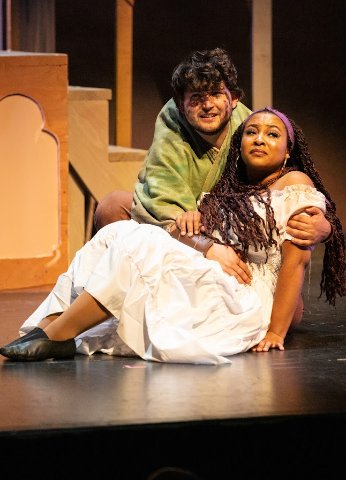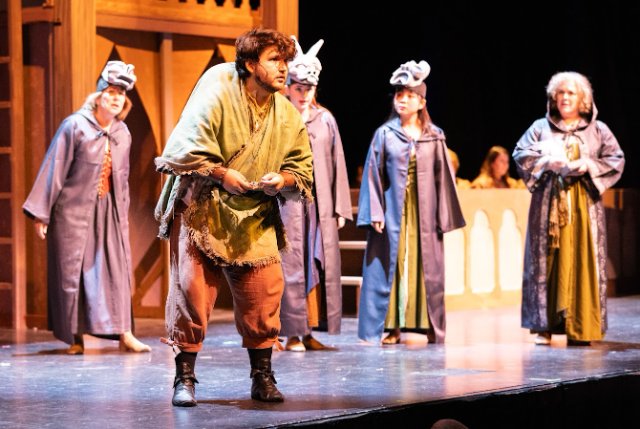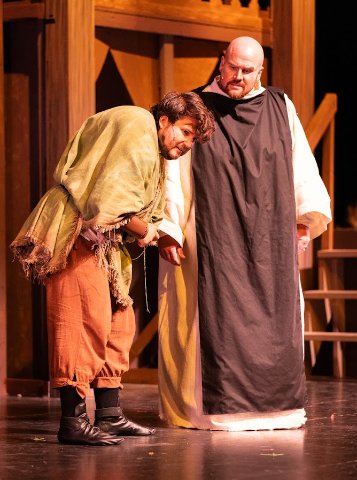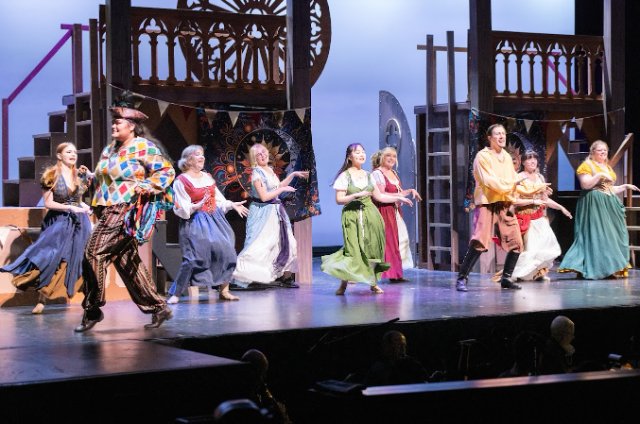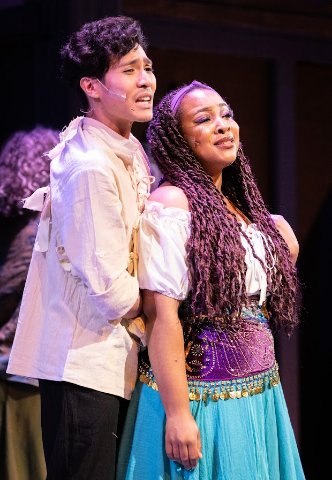The Hunchback of Notre Dame
Victor Hugo's Masterpiece Works Well as a Stage Musical
By: Victor Cordell - Jul 29, 2024
Rarely has a Disney film production suffered the awkward, nay ignominious, transfer to the stage as did the musical “The Hunchback of Notre Dame.” The 1996 film captured good reviews and awards and succeeded at the box office. The transition to stage was blessed with an immaculate pedigree. The material draws from Victor Hugo’s revered novel; the music is composed by Alan Menken who won Academy Awards for two other Disney films among his many accolades; lyrics are by Stephen Swartz who lists “Wicked” and “Godspell” among his many successes; and James Lapine (“Into the Woods” and more) was brought in to write the book for the stage. Revisions and new songs were written to enhance the stage version. What could go wrong?
Retitled “Der Glöckner von Notre Dame” (note that hunchback was changed to bell ringer), one portend was that it was the first ever Disney musical to open outside the United States. Although its debut in Berlin in 1999 ran for three years, that was its only successful production, with its first American appearance not until 2013. In hopes of revitalizing the property, a new book was written by Peter Parnell, and this 2014 version has met with some success in multiple productions, though it has never played Broadway or the West End. Nonetheless, the narrative contains drama, action, pathos, and lessons about human relationships. Although none of its songs have entered the canon of the American Songbook, the music is absolutely compelling throughout.
This daring choice by Castro Valley Arts Foundation and TMC Arts is highly worthy, and their offering has much to recommend it. Apart from the musical itself, the success of this production is driven by a highly talented trio of lead actors/singers.
Quasimodo is the ill-formed title character. He has been raised by a resentful and loathsome uncle, Claude Frollo, who is the powerful Deacon of the Cathedral. Quasimodo is confined to the bell tower, where he serves as the ringer, and his only human contact is with the cruel Frollo.
“The Feast of Fools,” the only day that gypsies are allowed to perform in Paris, provides a turning point. Quasimodo sneaks out to experience life and faces horror and scorn from all of the crowd except the Roma girl Esméralda who shows compassion for him. Enjoying only this smattering of humanity, Quasimodo understands how people can care for one another and will act accordingly. Confirming the notion of goodness, “The bells of Notre Dame” serves as both the musical and moral signature of the piece expressed in the poignant lyrics “What makes a monster and what makes a man?” Indeed, many lessons concerning character are conveyed.
Danila Burshteyn portrays Quasimodo. In addition to acting the part of the disfigured man, he has a beautiful voice and shows great range by hitting the high one in “Made of stone.” Theatrical performances always involve suspension of disbelief to greater or lesser extent. Between Burshteyn’s great voice and his pleasant and innocent appearance, despite makeup, it’s not so easy to imagine him ghoulish like Charles Laughton in the classic movie of the hunchback. But it’s hardly his fault, and it’s less of an issue because the Disney products are meant to appeal to children who probably don’t want an overly scary-looking protagonist.
The antagonist is Frollo, and he is played with great skill by Matthew Liebowitz, who has specialized in odious characters. Though his vocal range is substantial, his ability to power the low end suits him to unsympathetic characterizations as does his height and beard (I’m sure however that he’s actually a very nice person). Frollo is officious, uncompromising, bigoted, and vengeful, so the invisible chains on Quasimodo and his conflict with the Roma community which he despises is inevitable, despite his carnal weakness for the desirable Esméralda.
Finally, Solona Husband plays Esméralda, and she does so with great charisma and panache. While she shares her gentle side with Quasimodo, she reveals her independence in dealing with the advances of Frollo. Her role is granted some of the most beautiful music either as solos or in ensembles, including the beautiful Gypsy prayer “God help the outcast,” “Someday,” and “Top of the world,” and she responds with beautiful tremolo in deeper vocalizations and ringing clarity in her upper range.
The singing voices in the key supporting roles played by Charlotte Crespin as Clopin and Ethan Le as Phoebus are also sound. Interestingly, this is a fine work for community theater, because in addition to a number of principal roles, numerous single lines of song and dialog are delivered by individuals in the ensemble throughout. There are some good voices, but a number could use improvement. Hopefully, it’s mostly opening night jitters. Conversely, the Monk Choir, a standing group, sounded good particularly in religious music such as the opening “Olim.” The orchestra sounded a bit out of tune in Act 1, but not in Act 2. And while it was otherwise effective, it did sometimes overpower the singers.
Director Enrico Banson aptly coordinates a large number of moving pieces with an overall look that serves the time and place. One exception is that the action in the plot takes place on the ground and in the bell tower, and certain actions (not to be divulged here) seem silly when not occurring on an elevated platform (which there is in the set). Nonetheless, the musical offers considerable reward, and this realization has considerable merit, allowing that it is not an equity production.
“The Hunchback of Notre Dame” with music by Alan Menken, lyrics by Stephen Schwartz, and book by Peter Parnell is based on the novel by Victor Hugo, is produced by Castro Valley Arts Foundation and TMC Arts, and plays at Castro Valley Center for the Arts, 19501 Redwood Road, Castro Valley, CA through August 4, 2024.

